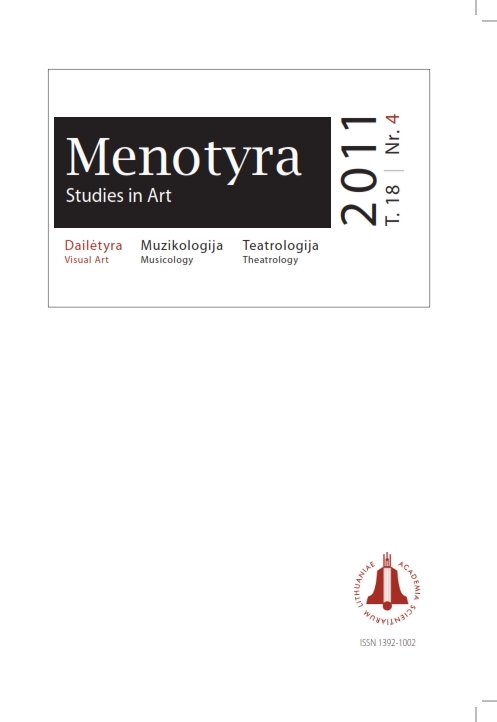Modernaus būsto idėja tarpukario Lietuvoje: tarp funkcionalizmo ir tautinio romantizmo
The idea of a modern home in interwar Lithuania: between functionalism and national romanticism
Author(s): Lijana ŠatavičiūtėSubject(s): Anthropology, Fine Arts / Performing Arts, Architecture, Cultural Anthropology / Ethnology, Rural and urban sociology, Sociology of Culture, Interwar Period (1920 - 1939), Sociology of Art
Published by: Lietuvos mokslų akademijos leidykla
Keywords: interwar daily life culture; interiors of the 1920s and the 1930s; national style; functionalism; rationalism
Summary/Abstract: In the current article, the living interiors of interwar Lithuania are discussed from the aspect of the relation between modern and conservative tendencies. The author seeks to reveal the discourse of the modernistic thought and find out how the new aesthetics was put into practice in a living space. Modernist propaganda in interior furnishing began to manifest itself in the 1920s and gained momentum in the 1930s, with the acceleration of the processes of the society’s modernization, the growth of cities, and the merging of traditional lifestyle with new forms of daily life. Modern culture in Lithuania was associated with progress and renewal. It was directed not only to introducing innovatory aesthetics, but also to overcoming backwardness. Lithuanian citizens were acquainted with the main features of modern architecture on the popular level. The authors of the articles ( Juozas Valentukonis, Mikalojus Vorobjovas, Halina Kairiūkštytė-Jacinienė) that appeared at that time were advanced specialists in their fields, well aware of the importance of the culture of daily life in forming a conscious society. However, the publications lacked deeper theoretical insights, and methodical advice based on practical logic – how to build and furnish a house in a more economical, simple and sanitary way – prevailed. With the aim to consolidate the professionalism of craftsmen, schools and courses of fine crafts were established. One of the important centres of training was the Evening Courses for Decorators established by the Ministry of Education in Kaunas in 1932, in which the creative abilities of apartment decorators were trained, their interests were expanded, and their taste was developed. An innovatory environment took root in Lithuania under the impact of local needs and traditions. Although the tendencies of functionalism and rationalism were reflected in interior furnishing, the conservativeness of the citizens, the limited financial possibilities of the state and individuals, the restrained attitude to the new aesthetics, and possibly the ideal of a cosy home became a hindrance to the radical development of innovations. The understanding of contemporariness did not clash with the traditional aesthetic norms and national features, which were adapted in the conditions of a new era.
Journal: Menotyra
- Issue Year: 18/2011
- Issue No: 4
- Page Range: 275-290
- Page Count: 16
- Language: Lithuanian

